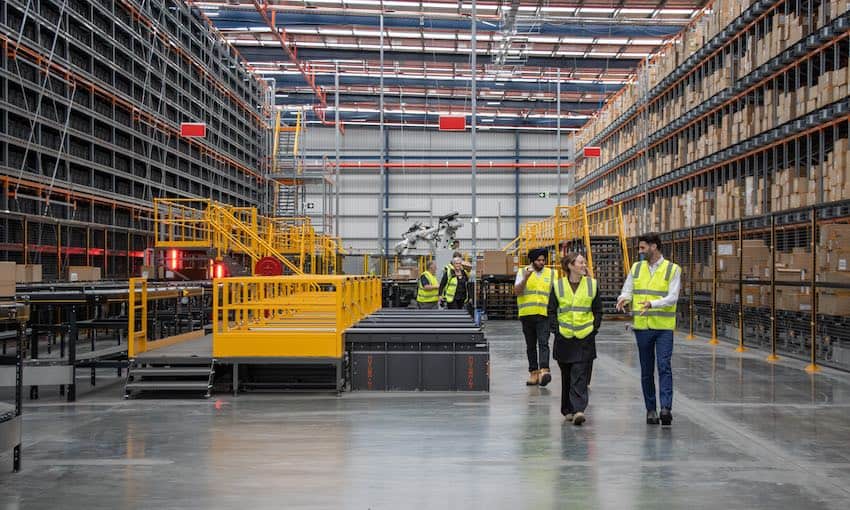MAERSK has announced the opening of seven new facilities across the country as it marks its 30 years in Australia.
Six of the seven new facilities will be omnichannel fulfilment sites. Four sites opened earlier this year and three more are due to come online between now and the first quarter of 2024.
The seven facilities would bring the number of Maersk’s sites in Australia to eight in total. Two of them were integrated into the Maersk network when it acquired LF Logistics last year.
Maersk’s new facility in Derrimut, Melbourne uses AI technology to automate warehousing processes and is positioned to support the flow of goods along the supply chain.
Kylie Fraser, Maersk’s managing director of Oceania, said the impacts of Covid as Maersk approached 30 years in Australia presented the company with an opportunity to determine what its land-based capabilities would look like in Australia.
“The team here worked really closely with the government in particular around unlocking import volume to be able to come down into Australia,” she said.
“I think that it was never more prevalent than in Covid that Australia was a long way away from other markets.”
Ms Fraser recalled challenges along Australia’s east-west rail corridor that disrupted the movement of cargo from one side of the country to the other.
“I do think that was the opening for Maersk to have a really solid look at Oceania, and in particular Australia, at how can we really expand [our solutions to the problems],” she said.
“From what was really quite a small footprint [to] where we’re moving by the end of Q1, we’re going to have a total of eight facilities … and we’re adding an increased footprint of 126,000 square metres into our warehouse environment down here. It is really exciting.”
Maersk celebrated another milestone this year when it introduced Laura Maersk, the company’s first methanol-enabled containership.
My Therese Blank, Maersk’s head of market for Oceania, said the delivery of Laura Maersk was also a milestone for the wider shipping industry.
“This is the first green-methanol-enabled vessel globally, and it’s something completely new for our industry,” she said.
“With the Laura Maersk now on water, we will save 100 tonnes of emissions every single day. And we have 25 ships in our total order book. And when they come online, they will reduce emissions by 2.3 million tonnes per annum.”
Ms Blank noted that when Maersk ordered Laura Maersk there was not enough methanol available to fuel a methanol-powered fleet.
“We really made a bet to start and see the change, and this is exactly what we are seeing in Australia too,” she said.
“But now, companies and investors really understand how huge this is, when we start to talk to some of the potential producers.”
In April this year Maersk became one of seven signatories to a memorandum of understanding to explore the feasibility of establishing a methanol bunkering hub at the port of Melbourne.
“As part of the MoU that we have with Port of Melbourne, we are looking at different options, so how do you enable the transportation from different sources to create this fuel hub?
“These are things where industry collaboration becomes so important, because as Maersk, we cannot do that alone,” Ms Blank said.
“We are not the ones who produce the fuel; we are not the ones who are going to transport the fuel. We are the ones who are going purchase the fuel and we are the ones who are going to buy the service to have the fuel on our ships.
“For Australia as an economy this is a huge opportunity, because today we don’t really bunker in Australia because it’s expensive. So, we fuel our ships up in Southeast Asia.
“This is a completely new market [and] a financial opportunity where we actually will fuel here in Oceania, given the production that is now coming online. It’s a really exciting time.”

